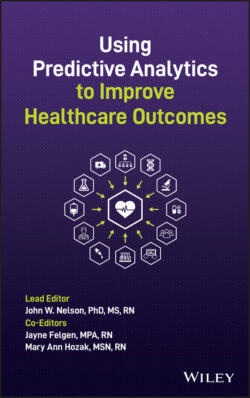Читать книгу Using Predictive Analytics to Improve Healthcare Outcomes - Группа авторов - Страница 72
Leaders Using Data for Inspiration: Story 1
ОглавлениеHere is an example of how a unit manager used data to work with staff members to plan for change.
A primary goal of the nurse manager of a neuroscience unit was to create a sustainable Primary Nursing care delivery system as an antidote to the task‐based nursing she saw on the unit. Seeing some hesitation in the group about where to begin, she had an idea for how to use data to get the staff council moving in the desired direction. She used call bell data obtained from the nurse call systems to get them started in the design of Primary Nursing on their unit.
The unit planned to build their Primary Nursing system utilizing RN pairs and partnerships.1 Nurses would work in partnerships to help share select tasks such as routine nursing care, medication administration, responding to emergencies, answering call bell lights, and patient and family interactions. It was theorized that by working together as an intentional team for a select portion of the care, nurses and support staff members could serve their patients better.
The first thing they took on was the effort to decrease call bell response time, with consistent RN partners working together to figure out how to respond to patients quickly, with the goal of responding in under two minutes. As call bells rang within a range of the hallway, one of the RN partners would answer the call if the other was occupied with another responsibility. This initiative led to the nurses recognizing the complex aspects of their daily workload and enabled them to prioritize tasks differently. They used data to see what partnering strategies were working as they reduced the response time to call bells. These efforts contributed to improving staff satisfaction with both team relationships and patient care.
It was discovered that patient satisfaction was high only when the staff's satisfaction with collaborating with each other was also high. As the collaboration of the team increased and role clarity improved, the staff council saw a decline in call bell light response time, an increase in staff satisfaction with teamwork and patient care, and improvement in patient satisfaction scores.
As the collaboration of the team increased and role clarity improved, the staff council saw a decline in call bell light response time, an increase in staff satisfaction with teamwork and patient care, and improvement in patient satisfaction scores.
Their ever‐deepening understanding of how to use data even prompted the staff to inquire of the data scientist whether they could study the predictors of workload. The study that followed is described in detail in the article “Measuring Workload of Nurses on a Neurosurgical Care Unit” (Nelson, Valentino, et al., 2015).
